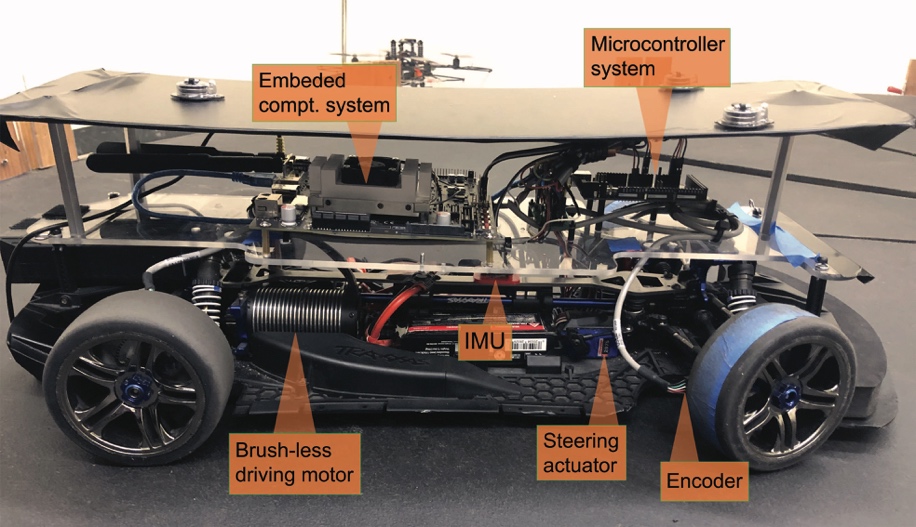
Autonomous scaled vehicle platform

Invention Summary:
Extreme driving maneuvers performed by professional car drivers can potentially be used as active safety features for passenger vehicles under emergency situations. Control design of these extreme driving strategies is challenging since these extreme driving operations usually occur at the maximum limit of the vehicle’s maneuverability.
Rutgers researchers have developed a model-based reinforcement learning (RL) method which uses Constrained Markov Decision Processing (CMDP) to find a risk-free control policy for autonomous J-turn maneuver. This framework combines the vehicle’s analytical model and range of uncertainty with the expert’s instruction to achieve a successful and safe maneuver in real world. Experimentally documented, this model remains in the safety constraint 100% of the time in both the worst-case scenario and in the real world, while also being able to perform the J-turn maneuver faster. Prudent reinforcement learning provides an enabling tool to design feasible and safe extreme maneuvers for future autonomous vehicles.
Advantages:
- Maneuvering of vehicle in emergency situations in a safe manner
- Quick response (reaction) time in situations where time is an important factor
Market Applications:
- Automobile Industry
- Self-Driving cars
Publications: Arab et. al., Safety-Guaranteed Learning-Predictive Control for Aggressive Autonomous Vehicle Maneuvers, 2020 (AIM)
Intellectual Property & Development Status: Patent pending, available for licensing and/or research collaboration.